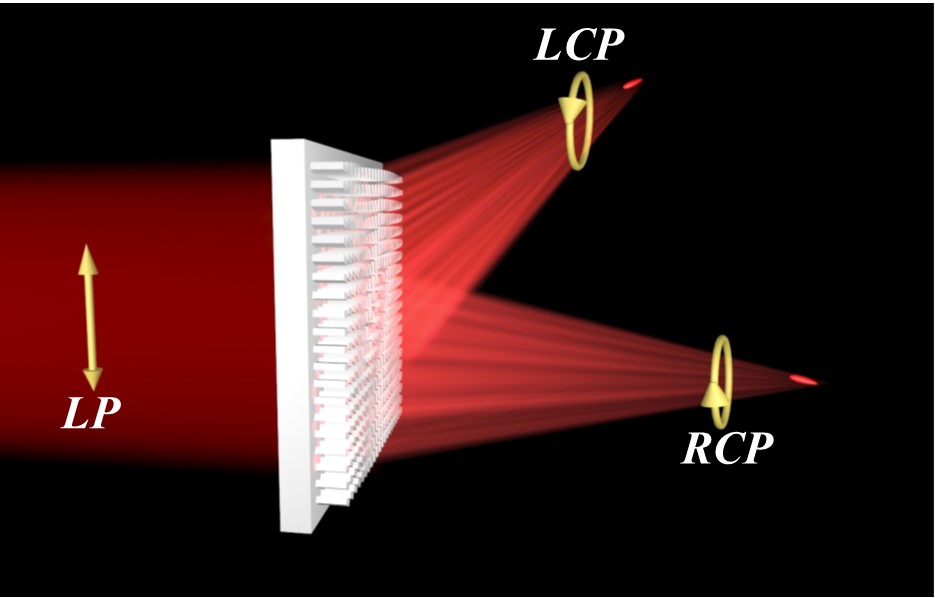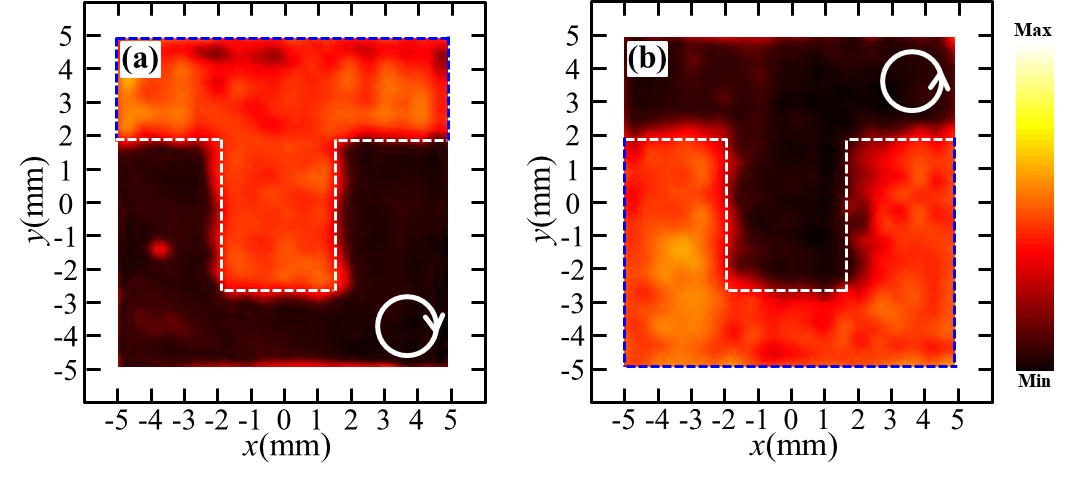Recently, the Terahertz Innovation Research Institute demonstrated an approach to designing multidimensional spin Hall metalens that can flexibly manipulate the spin. The uniqueness and robust approach for manipulating spin photons may have a significant impact on designing ultra-compact and multifunctional devices and spin photonics devices. The relative article titled “Geometric phase for multidimensional manipulation of photonics spin Hall effect and helicity-dependent imaging” was published in Nanophotonics. (https://doi.org/10.1515/nanoph-2020-0115).
The spin Hall effect (SHE) of light, associated with spin-orbital interaction, describes a transport phenomenon with optical spin-dependent splitting, leading to a plethora of applications such as sensing, imaging, and spin-controlled nanophotonics. However, it is difficult to capture an obviously spin-dependent shift because of the extremely weak spin-orbital interaction. Metasurfaces enables the functionality for generating a remarkable phase discontinuity that can sharply change the light trajectory, opening a new avenue for developing strong PSHE devices. Although the geometric meatsurfaces can mimic photonic spin Hall effect by spatially splitting LCP and RCP states of electromagnetic waves with anomalous/reflection angles, the geometric phase generated by metasurfaces hinders the metalenses to realize simultaneous focusing of different spin states, limiting the further applications.
To address the above challenge, Prof. ZANG Xiaofei from School of Optical-electrical and Computer Engineering proposed and experimentally demonstrated an approach to realizing a spin Hall metalens that can flexibly manipulate photonic spin-dependent splitting in multiple dimensions based on the pure geometric phase. The position-controllable and spin-dependent focal points are realized based on the geometric phase. The helicity-dependent imaging capabilities are further demonstrated utilizing the spin Hall metalens. The simplicity and robust approach in manipulating SHE provides a platform for designing future compact devices. To our best knowledge, it is the first experimental demonstration of the multidimensional manipulation of PSHE and especially helicity-dependent imaging based on the pure geometric phase in THz region.

